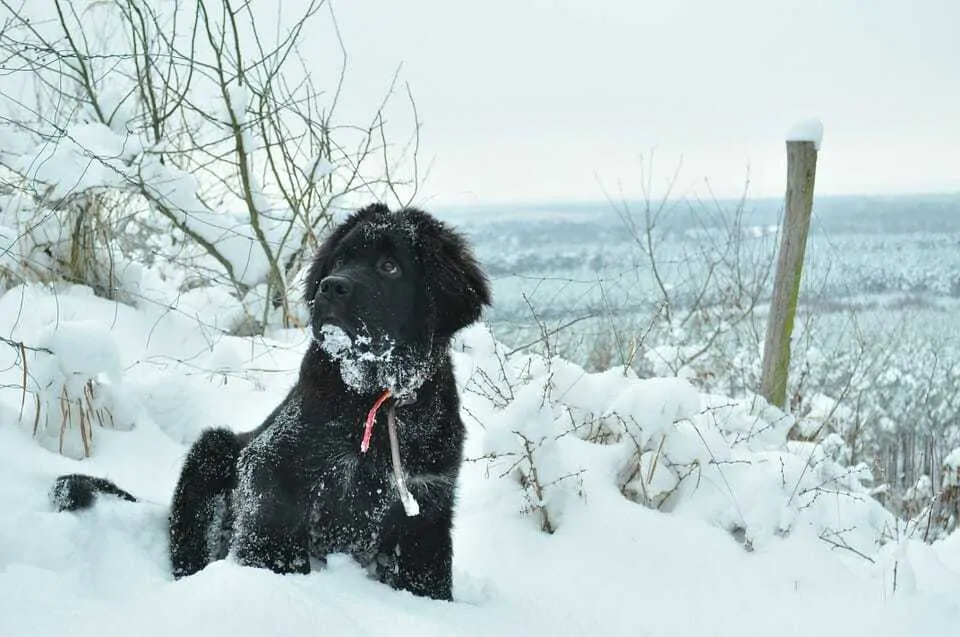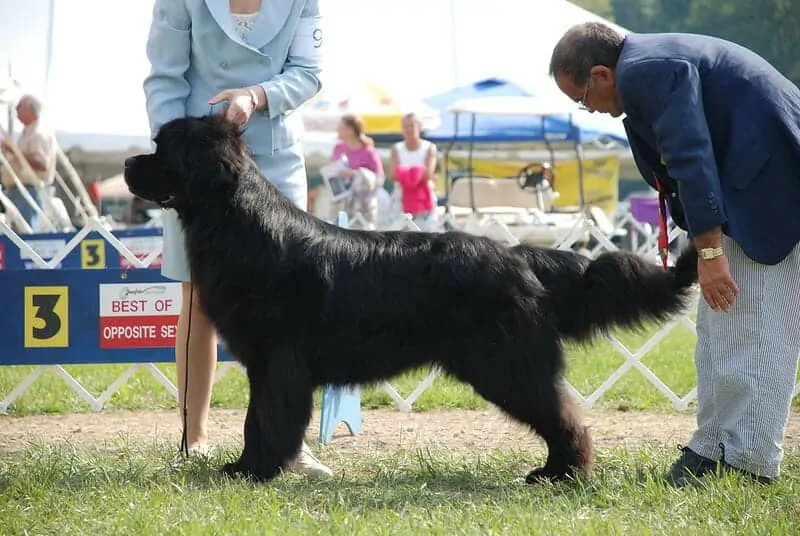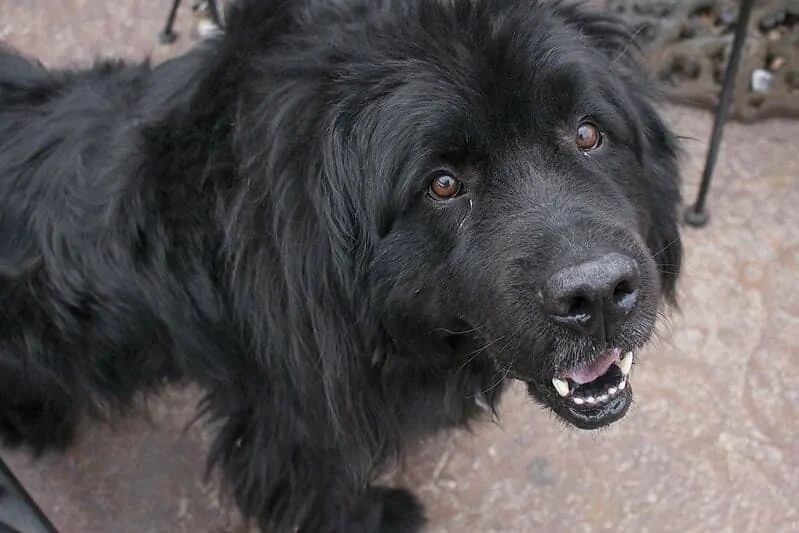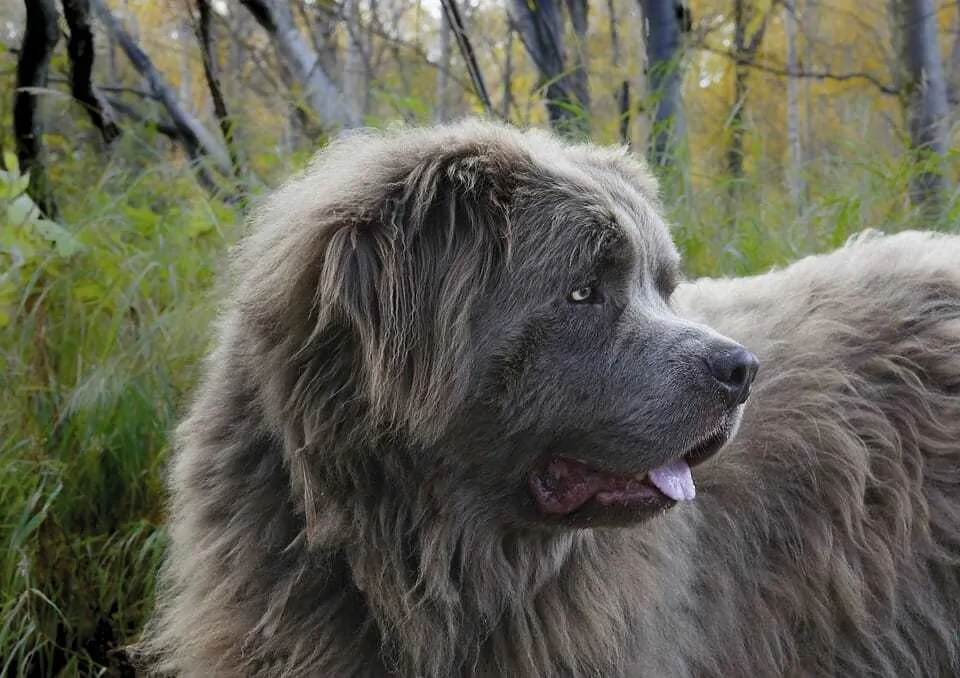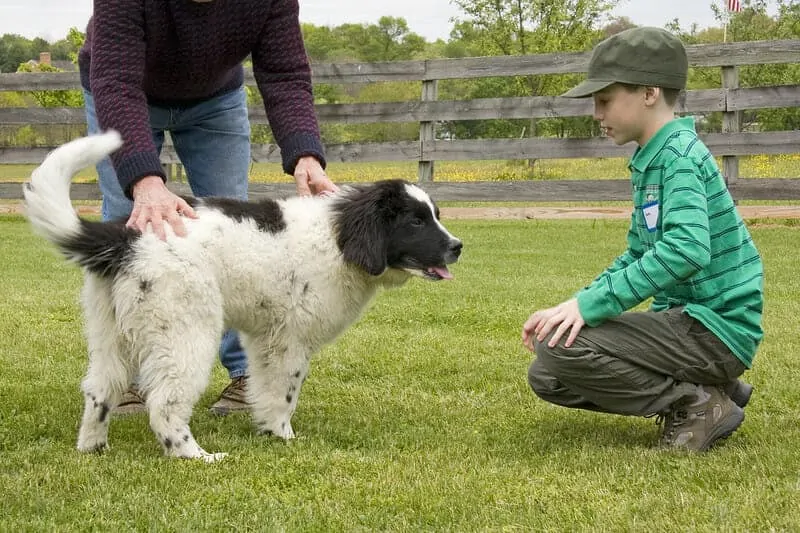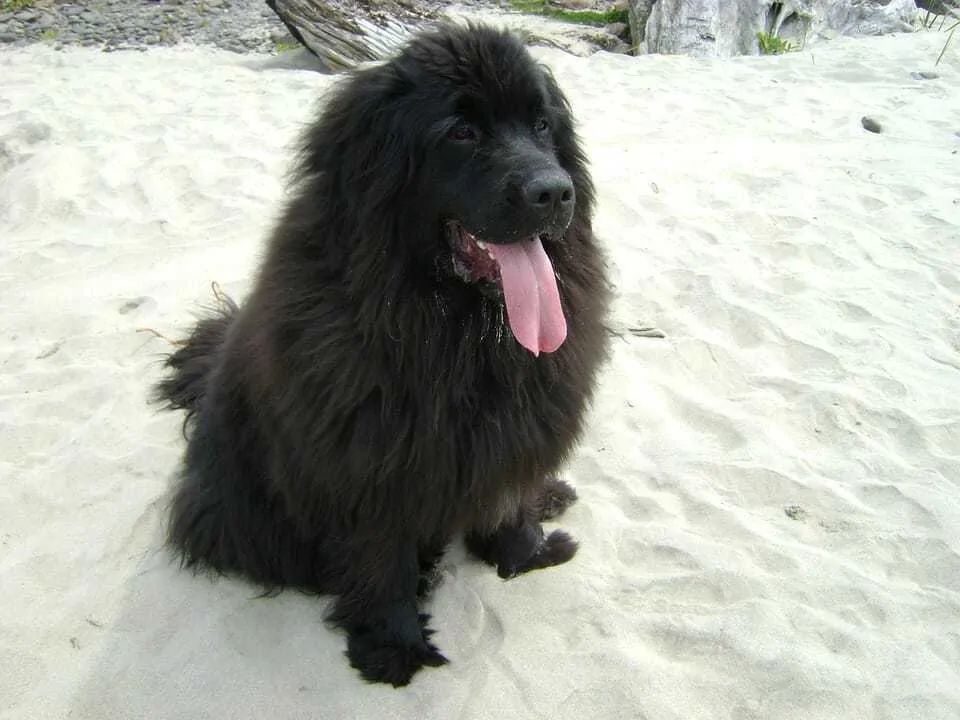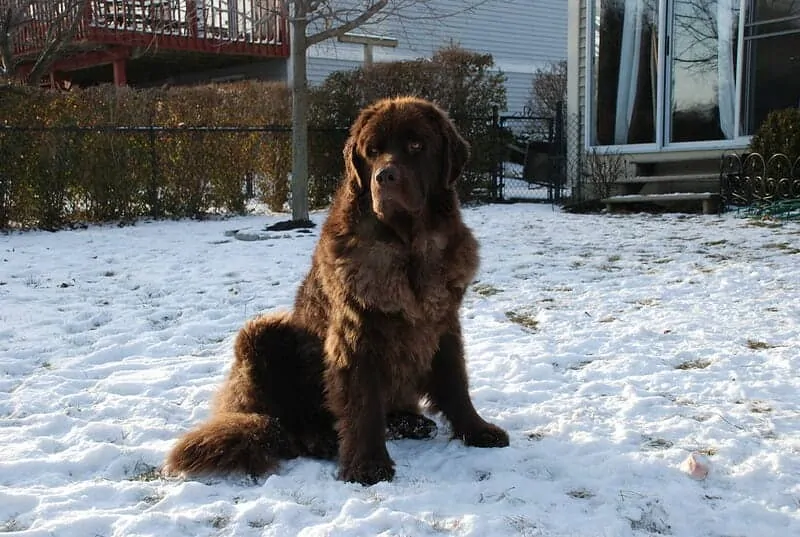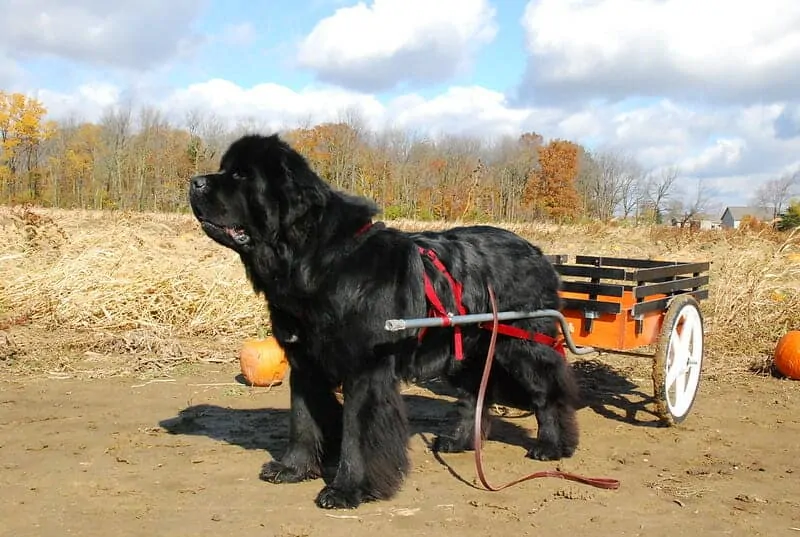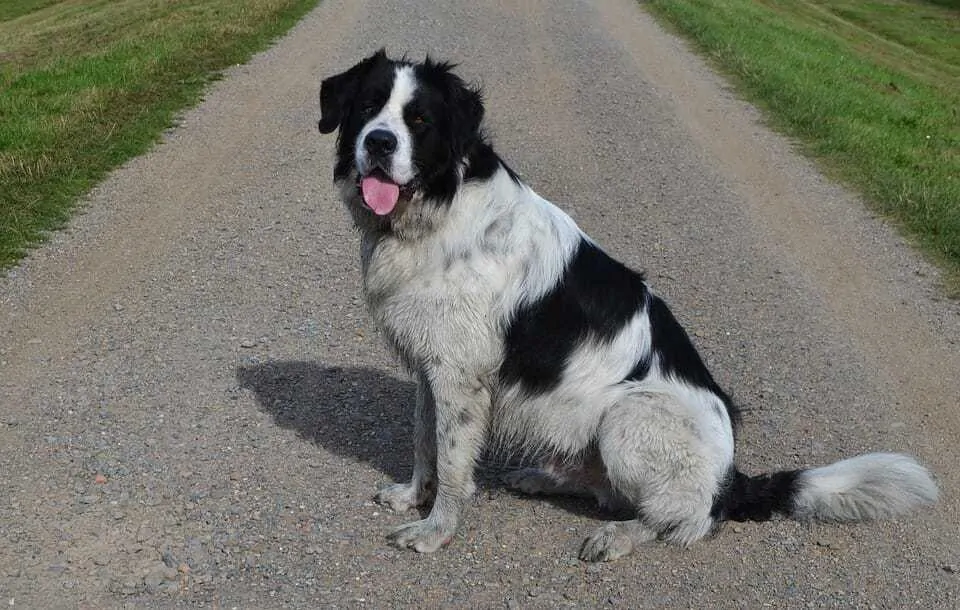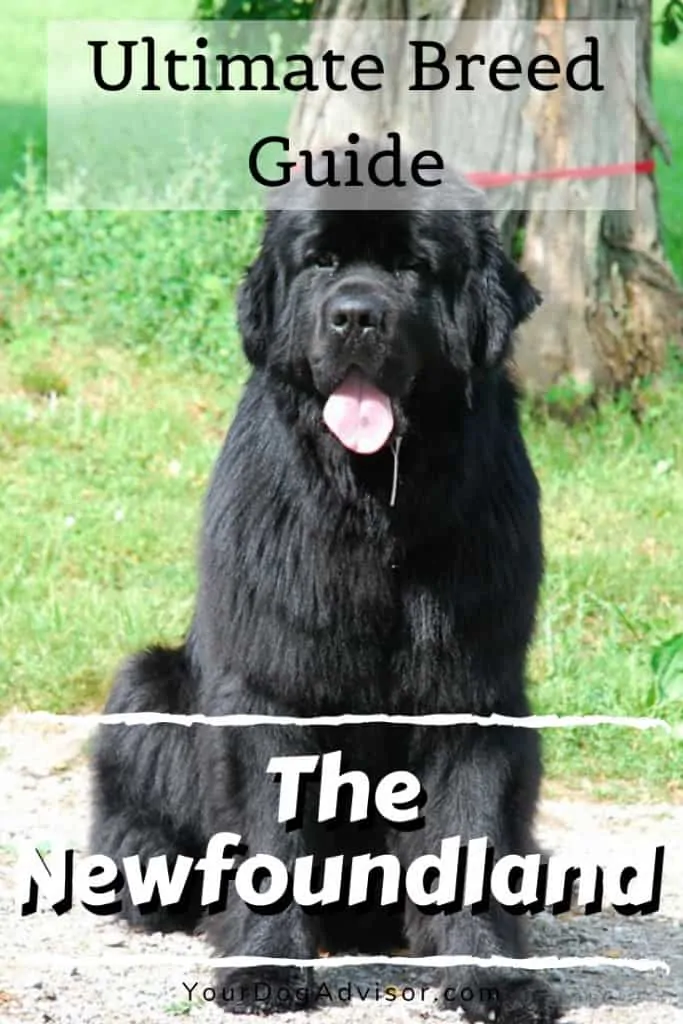Known for their gentle nature and famous for their shaggy, bear-like appearance, the Newfoundland is one of the most popular giant dog breeds around the world. Given this unique combination of brawn and calm, these dogs make great family pets as well as surprising athletes.
But, with their thick coat, need for extra space, and range of health issues, these dogs aren’t right for everyone. Keep reading to find out if the Newfoundland would make a good match for your lifestyle and personality.
Contents
General Characteristics of the Newfoundland
- Other names: Newfie, Newfoundlander
- Height: Up to 28 inches
- Weight: 100 to 150 pounds
- Lifespan: Around 10 years
- Origin: Newfoundland, Canada
- Colors: Black, black and white, liver, gray
- Activity level: Moderate
- Grooming needs: High
- Best suited for: Families and individuals with moderate dog experience
Even as puppies, Newfs are already big dogs who can’t wait to play in the snow with their naturally thick and protective coats.
The History of the Newfoundland
The exact roots of the Newfie breed are shrouded in mystery, with some claiming the breed dates back as far as the first Vikings arriving on the northern shore and bringing their large bear-like black dogs with them.
More recent evidence points to a common ancestor for all Canadian retrievers, including the Newfoundland, Labrador and flat coated retriever. The large size and thick build of the Newfie is likely a result of crossbreeding with Portuguese mastiffs brought to the island by foreign fisherman.
There were originally two types of Newfie dogs. The first was a smaller, shorter coated breed known as the lesser Newfoundland or the St. John’s dog. Like Labradors and other medium-sized retrievers that descended from this line of Newfies, this dog was commonly used on fishing ships to retrieve nets and other gear.
The second working dog on the island was called the greater Newfoundland and had a build closer to modern-day Newfies. These dogs did many of the same jobs as the smaller retrievers but, because of their large size, were especially adept at open water rescues and hauling carts full of fish from the docks up to the markets.
The Newfie is an athletic dog, especially in the water. Combine that with their intelligence and calm disposition and you have the complete package. “Newfoundlands: Clermont County Dog Show” by Matty Sides / CC BY-NC 2.0
The Newfie’s reputation as a hard-working and loyal companion quickly gained them popularity across the world. Their natural instinct for water retrieving and rescues made them a common sight on fishing boats on both sides of the Atlantic while their gentle personality attracted the attention of well-to-do families.
Today, the Newfie is still commonly used as an open water rescue dog but otherwise, their working days are largely behind them. They are one of the most common giant breed dogs kept as pets in the US and Europe and are largely considered one of the best dog breeds for families with young children.
The Temperament of the Newfoundland
Over the years, the Newfie has gained a reputation as the “nanny dog” due to their soft temperament and willingness to put up with the antiques of young children. While these dogs may be formidable in size and may occasionally let out a bark to warn off an intruder, they are rarely aggressive. In fact, the Newfoundland breed standard says “sweetness” is the hallmark of the breed and “the single most important characteristic.”
Newfies are a friendly, outgoing breed that tend to get along well with strangers and other dogs. “Travis” by Kelsey / CC BY-NC-ND 2.0
Beyond their affable disposition, these dogs readily switch between a loving couch potato and a high energy adventurer, depending on the situation. They make great hiking and camping companions and are especially fond of swimming and water sports. While they are not a great choice for apartment and city living due to their huge size and tendency to make a mess, they can be quite subdued indoors as long as they receive a daily walk or other types of consistent exercise.
Young dogs especially will benefit from activities such as agility, dock jumping, and cart pulling to release excess energy. These are also great ways to access the natural instincts of a breed that was used primarily as a workhorse not too long ago.
>>>Find out more about the benefits of dog sports.
Newfies are naturally loving with strangers and family and have an instinct for heroics. In fact, the drive to act in emergencies is so hardwired into these dogs that there are numerous stories out there of Newfies saving lives, even without any prior training in water or other kinds of rescue.
<iframe width=”560″ height=”315″ src=”https://www.youtube.com/embed/6Bg9XTPsz4Y” frameborder=”0″ allow=”accelerometer; autoplay; encrypted-media; gyroscope; picture-in-picture” allowfullscreen></iframe>
Learn more about the Newfie breed by watching the video above.
Health Issues Common to the Newfoundland Breed
While the general personality of this giant dog may be close to flawless, their health is another story altogether. Like many large breed dogs, they can suffer from numerous bone, joint, and eye issues. Additionally, there are some less common issues specific to Newfoundlands that potential owners should be aware of such as bladder stones and heart problems.
Here are some common health issues that can affect this breed:
- Elbow dysplasia
- Hip dysplasia
- Cystinuria
- Cataracts
- Entropion
- Ectropion
- Epilepsy
- Subaortic stenosis
While Newfoundland breeders are easy enough to find due to the breed’s popularity, it is important to make sure you do your research. Responsible breeders will screen their breeding stock for health issues and only breed lines that are free from common hereditary diseases like cystinuria and subaortic stenosis.
One of the rarest colorings for a Newfie is a “gray” coat, which is actually either a muted liver or black color. (https://pixabay.com/photos/dog-canine-newfoundland-gray-1840127/)
Legitimate breeders will also let you meet the parents of any future litters. Be watchful of any behaviors uncharacteristic to the breed such as shyness or aggression. While these are rare traits, they aren’t unheard of. And if your goal is to bring home the perfect family dog, you want to make sure you are getting what is advertised.
Because of their popularity, there are a number of Newfie rescue groups looking to rehome pure and mixed breed Newfs. Before looking for a breeder, consider adoption first. These homeless Newfoundlands have just as much potential to be the perfect dog for you as a brand new puppy, and they are likely to be cheaper, too.
Do Newfoundlands Do Well With Children and Other Pets?
It should come as no surprise that these nanny dogs tend to do exceedingly well with children of all ages. The Newfie’s ability to get along so well with all people is likely related to their history as a working dog. While riding along on fishing boats and pulling carts through town, they would have encountered a variety of different people and other animals. In order to do their job successfully, they needed to be calm and unflappable in these situations.
It is also highly likely that Newfs have some herd guardian blood in their ancestral line, possibly the Tibetan mastiff or great Pyrenese. These types of dogs are naturally good with young children and exceedingly gentle with babies of all forms.
Newfoundlands are naturally good with kids, but their large size can be a problem if they aren’t used to being around small children. Introducing your Newfie to kids at a young age can help them learn how to behave appropriately. “Newf Day 2012” by Tracy Lee / CC BY-NC-ND 2.0
Of course, all dogs have different personalities and even the unflappable Newfie might act out if pushed hard enough, so always supervise dogs and children together.
The same gentleness that makes these giants great with kids also means they typically get along well with other dogs and pets. While another dog might take offense to the Newfie’s large size, they aren’t known for throwing their weight around and prefer to wrestle rather than fight. Some Newfs, especially younger ones, may not know their own size, so caution should be taken around smaller dogs and pets.
What to Consider Before Bringing Home a Newfoundland
While these beautiful, gentle giants have every potential of being the perfect family dog or adventuring companion, they aren’t right for everyone. Before committing to a new Newfie family member, you need to consider these important points.
Activity Level
These are big dogs that take up a lot of space, even when they are just taking a nap. But having a house large enough to contain these dogs comfortably is just the first requirement. While they are happy to relax when you do, they are working dogs and require a certain amount of activity every day. More mature dogs will do well with a long walk or quick hike, but younger pups and adolescents need much more stimulation. Consider entering into a competitive dog sport when your Newf is old enough to help keep them out of trouble at home.
Newfoundlands are well adapted for cold climates but are not great choices for owners who live in especially hot or humid places. (https://pixabay.com/photos/newfoundland-snow-dog-black-newfy-2078383/)
Trainability
Newfies are known for their smarts and are easily trained with the right motivation. Lacking motivation, they can be stubborn and are impossible to push around given their size. It is best to start training young. Not only will this help establish a good training routine, but it will give you better control over your new giant beast before they grow into their paws.
Grooming
When it comes to the well-tempered Newfie, it’s usually the grooming that puts the most owners off. These dogs have a thick double coat meant to keep icy water off their skin. The top layer is coarse and oily to help repel moisture while the bottom layer is thick and prone to shedding all year long. Newfies need frequent baths to avoid odor and matting. Unless you have a few hours to commit to the operation every few weeks, you need the means to pay a groomer.
If your plan is to shave off all that troublesome hair in the summer, don’t. Newfs rely on their insulating coats to keep them cool and it will take years to grow back properly after being hacked down. Instead, consider trimming leg feathers and sanitary areas to help keep things a bit cleaner year-round. They also require frequent ear cleaning and nail trims.
Newfies come in a variety of colors including this rarer liver coloring. Regardless of color, the Newfie coat requires a lot of upkeep. “DSC_0057” by Matty Sides / CC BY-NC 2.0
Nutrition
It is important that Newfie pups are fed large breed specific puppy food to keep their joints healthy and their growth in check. As they grow older, you will need to monitor their food intake to assure they don’t gain too much weight and put excess stress on their joints. Some Newfies can be picky eaters, so finding the right food with enough fat and protein to entice them without overdoing the calories is important. At 150 pounds, these dogs can eat a lot, so be sure you have the budget to care for them before committing.
Cost
Beyond the cost of food and grooming, these large dogs can require extra medical care, especially as they age. Large breed dogs often require physical therapy or other pain management intervention as their joints begin to deteriorate. You should be prepared for this before you ever bring home a puppy.
Purebred Newfoundlands can go for as much as $1500 for puppies, but most reputable breeders will be closer to a grand. Breed rescues often have adolescents and older dogs available for a few hundred dollars.
>>>Wondering what the true cost of owning a dog is? Find out here.
When Newfies were working dogs back in Canada, they were often used to pull carts and carry baggage. This ability set them apart from smaller retrievers common to the area. “DSC_0797” by Matt Sides / CC BY-NC 2.0
10 Fun Facts About the Newfoundland
Now that you know a little more about owning a Newfoundland, here are some fun facts about the breed.
- White and black Newfies are called Landseers after the artist who famously painted this particular type.
- When the Despatch ran aground in Newfoundland in 1828, a family and their Newfie dog were credited with saving 160 passengers from the icy waters.
- Newfoundlands were used to resurrect the dying St. Bernard breed after the dogs almost disappeared following a distemper outbreak in Switzerland.
- Newfs were also part of the foundation stock of the Leonberger breed.
- A Newf named Seaman famously accompanied Lewis and Clark on their expedition across America.
- Newfs have an extraordinary lung capacity which allows them to swim great distances even while carrying or pulling along drowning victims.
In some countries, the black and white Landseer Newfie is considered a separate breed and has taken on a more slender, taller physique than it’s solid-colored cousins.
- A Newfie named Boo, who had no training whatsoever as a rescue dog, was credited with saving a drowning man in the Yuba River in California after she and her owner happened to be walking by at the right time.
- The Newfie has a more exaggerated “breaststroke” type paddle than the typical dog, making them especially good swimmers.
- Newfies have webbed feet just like their close cousins the Labrador.
- Newfies are a Canadian breed, but most modern Newfs can trace their ancestry back to dogs bred in England.
Before You Go
Not sure the giant, hairy Newfie is right for you? Check out these other Ultimate Breed Guides:
- Australian Cattle Dog
- French Bulldog
- Great Pyrenees
- Tibetan Mastiff
- Cane Corso
- Greater Swiss Mountain Dog
- Rhodesian Ridgeback
“DSC_0379” by Matty Sides / CC BY-NC 2.0

Sara Seitz has spent most of her life in the pet industry and has a bachelors in animal behavior from Colorado State University. Sara started working with dogs and cats as a high schooler at a rural boarding kennel. There she learned a lot about the bad and the ugly of the pet service industry. But not even the toughest day at that job would dissuade Sara from following her dream of working with animals.
In college, Sara got a job at a dog daycare and boarding facility in Fort Collins, Colorado. Her new career provided even more opportunities for learning about dog behavior than her classes did. As general manager of the daycare, Sara helped the company launch a new in-home pet sitting branch and trained to become a certified dog trainer. Between shifts taking care of peoples pets in-home and supervising dogs during playtime at the daycare, Sara organized and taught obedience classes.
Sara has always been passionate about bettering the lives of our canine companions. She soon found that advocating for and educating owners in the power of positive reinforcement training was one of the best ways to help dogs and their owners live happier lives.
